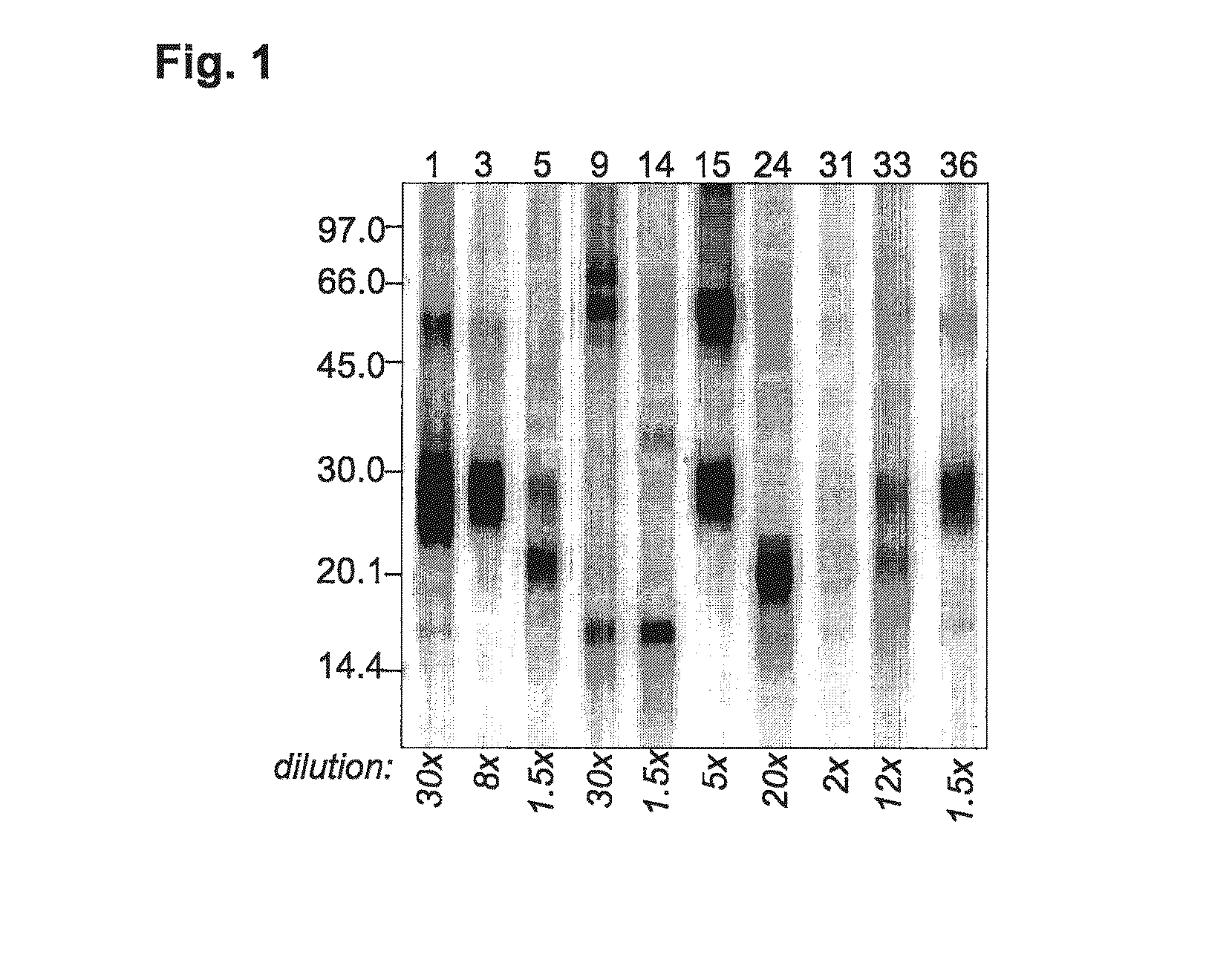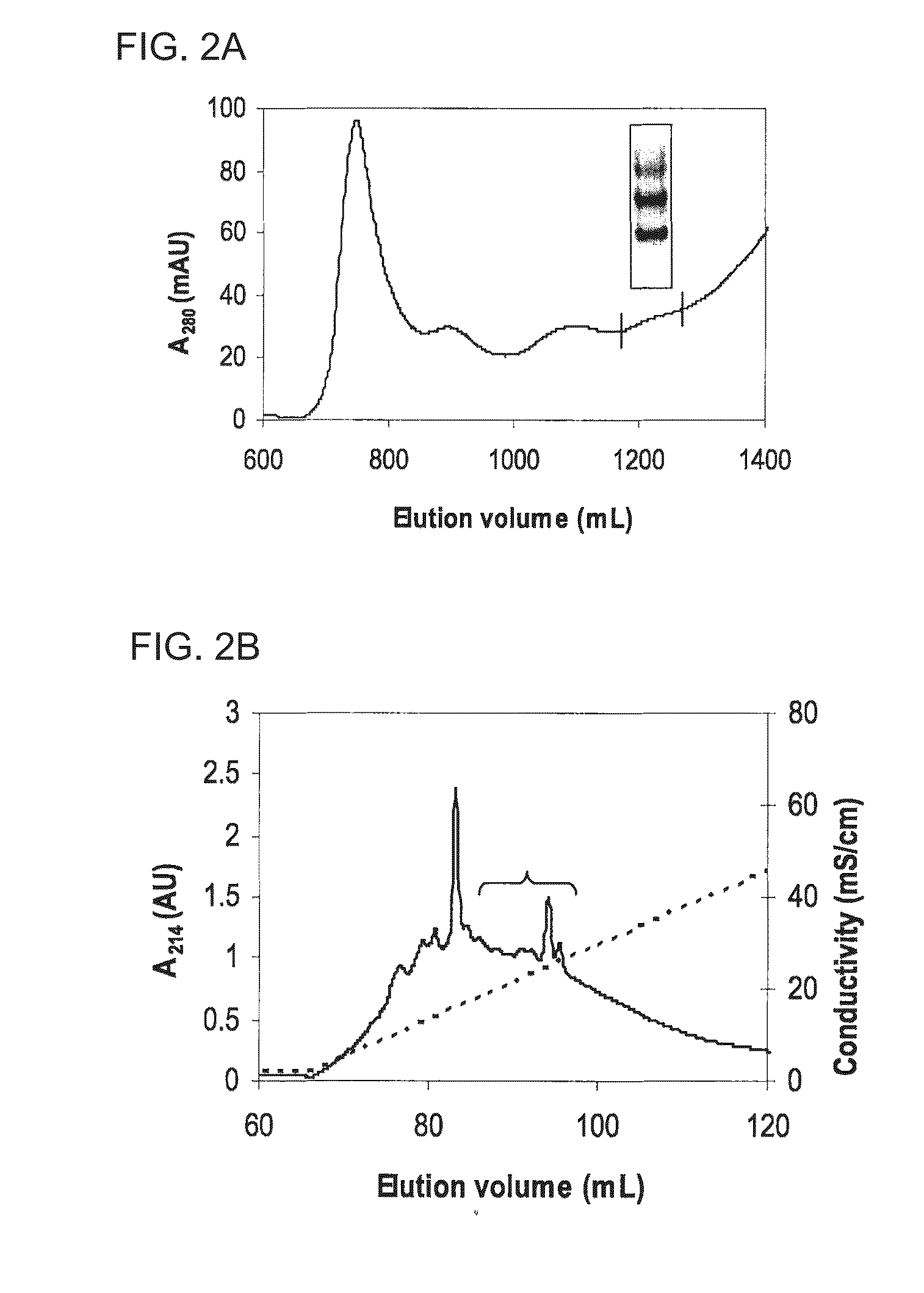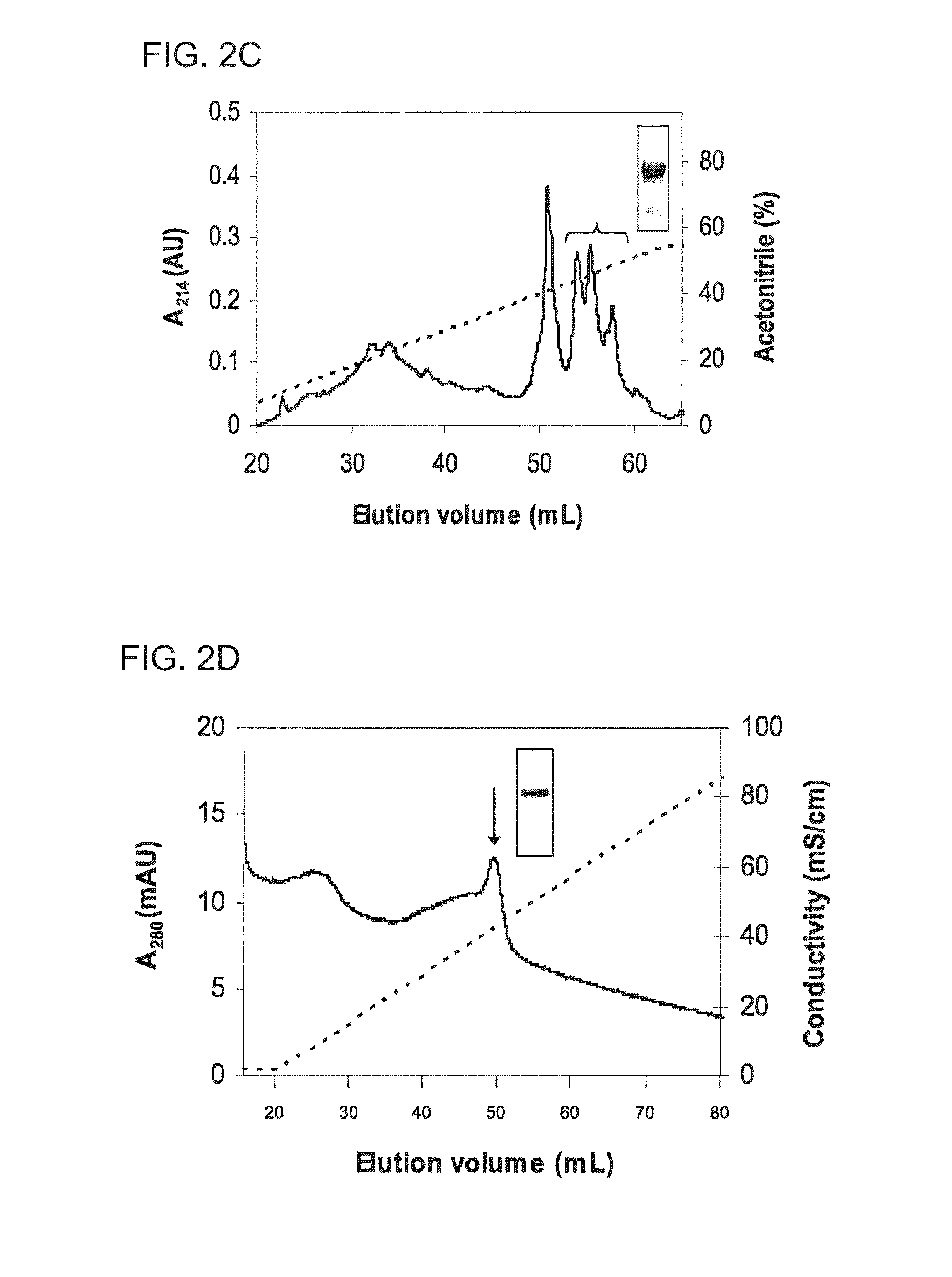Recombinantly produced allergens
a technology of recombinantly produced allergens and allergen reagents, which is applied in the field of allergy, can solve the problems of insufficient diagnostic sensitivity, low antibody-binding ability of allergen reagents and natural allergen extracts of limited potency,
- Summary
- Abstract
- Description
- Claims
- Application Information
AI Technical Summary
Benefits of technology
Problems solved by technology
Method used
Image
Examples
example
Material and Methods
[0060]IgE Immunoblot Analysis
[0061]Immunoblot analysis was performed on non-reduced dog dander extract separated by SDS-PAGE using a homogeneous 12.5% ExcelGel (GE Healthcare Life Sciences, Uppsala, Sweden) and electroblotted onto a Hybond ECL nitrocellulose membrane (GE Healthcare Life Sciences). As molecular weight (MW) markers, the LMW kit (GE Healthcare Life Sciences) was used. Protein blots were blocked for 1 h at room temperature using blocking buffer (50 mM phosphate pH 7.4, 0.1% (v / v) Tween-20, 0.9% (w / v) NaCl, 0.3% (w / v) Dextran T10) and then incubated overnight with each patient's serum, diluted 1.5-30-fold in blocking buffer. After washing in blocking buffer with 0.5% (v / v) Tween-20, the membrane was incubated 4 hrs at room temperature with an 125I-labelled anti-human IgE antibody in blocking buffer and, after washing, bound IgE was radiographically detected using a storage phosphor screen and a Typhoon 9410 Variable Mode Imager (GE Healthcare Life Sci...
PUM
 Login to View More
Login to View More Abstract
Description
Claims
Application Information
 Login to View More
Login to View More - R&D
- Intellectual Property
- Life Sciences
- Materials
- Tech Scout
- Unparalleled Data Quality
- Higher Quality Content
- 60% Fewer Hallucinations
Browse by: Latest US Patents, China's latest patents, Technical Efficacy Thesaurus, Application Domain, Technology Topic, Popular Technical Reports.
© 2025 PatSnap. All rights reserved.Legal|Privacy policy|Modern Slavery Act Transparency Statement|Sitemap|About US| Contact US: help@patsnap.com



